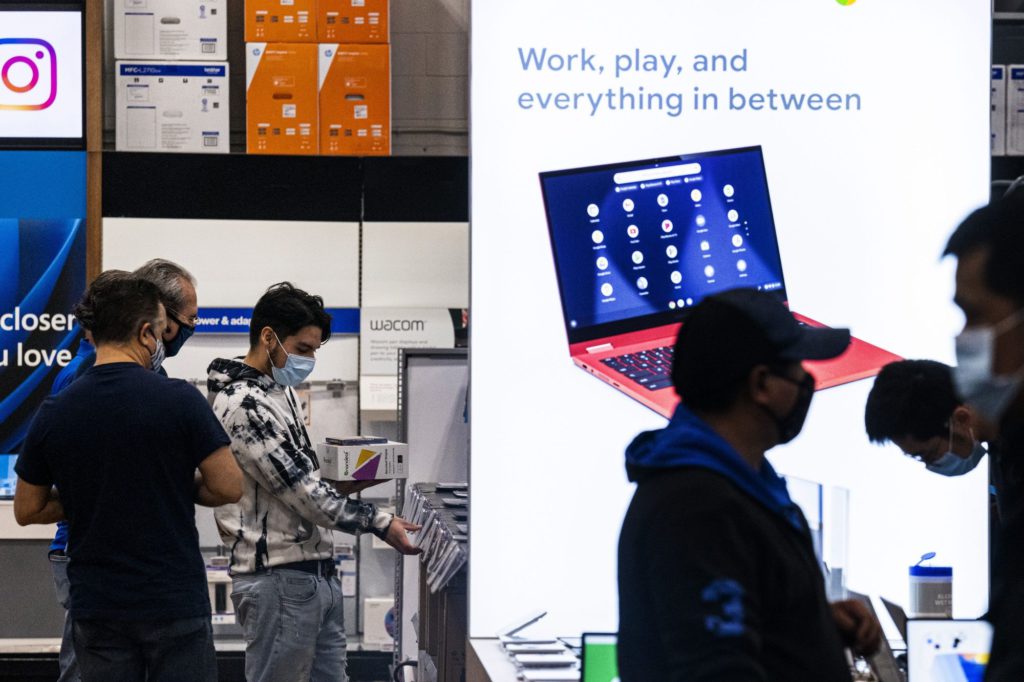(Bloomberg) — Best Buy Co.’s forecast cut was less dramatic than Wall Street feared after last week’s rout in US retailers, helping to stave off more losses for the stock.
Rising wages and supply-chain costs pressured profit in the first quarter and show little sign of abating soon, Chief Executive Officer Corie Barry said Tuesday after the company reported earnings. But that hasn’t pushed expenses too far beyond projections, and sales of key electronic goods are expected to pick up in the second half of the year, she said.
The results offered some solace to investors after Best Buy was caught up in last week’s selloff sparked by worsening profit forecasts at Walmart Inc. and Target Corp. While Best Buy’s fiscal first quarter was expected to be weak as the US economy lapped an injection of government stimulus in early 2021, sales fell less than analysts predicted, and Barry said costs were only “a little higher” than planned.
“We continue to be in a fundamentally stronger position than we expected to be” before the pandemic, she said on a conference call with analysts.
Best Buy rose 0.5% at 12:36 p.m. in New York as broader markets fell. The shares had tumbled 29% this year through Monday, while an S&P 500 index of consumer-discretionary stocks declined 31%. Best Buy slid 16% last week alone.
Worsening Backdrop
The worsening economic backdrop prompted the consumer-electronics retailer to cut its annual forecast for earnings, revenue and same-store sales. The company also revised its outlook for operating profit to between 5.2% and 5.4% of sales, down from the previous prediction of 5.4%.
Barry said she expects “elements of soft demand” this year but not a full-on US recession.
US consumers are “getting a little bit more wary” amid the highest inflation rates in four decades, she said. But technology is becoming more central to consumers’ lives, limiting the extent to which they’re looking to cut spending on Best Buy’s wares. Easing supply-chain constraints should improve availability of popular merchandise such as Apple Inc. products, video-game consoles and speakers later in the year, she said.
While the company made inroads among lower-income and female shoppers during the pandemic, customer demographics are starting to shift back to their traditional skew toward higher-income men, the CEO said.
Revenue slipped 8.5% to $10.6 billion in the three months ended in late April. That exceeded the $10.4 billion average of analyst estimates. Inventory only rose about 9%, a modest increase compared with the jumps of more than 30% at Walmart and 40% at Target, which prompted markdowns.
In the first quarter, Best Buy’s adjusted earnings fell to $1.57 a share, trailing the $1.60 average of analyst estimates compiled by Bloomberg. Comparable sales fell 8%, while analysts had expected a 9.4% drop.
“We think investors were bracing for an even larger outlook reduction,” said Scot Ciccarelli, an analyst at Truist Securities, in a note to clients. “However, with such a modest reduction, we suspect investors will be asking, ‘Is that enough?’”
More stories like this are available on bloomberg.com
©2022 Bloomberg L.P.











